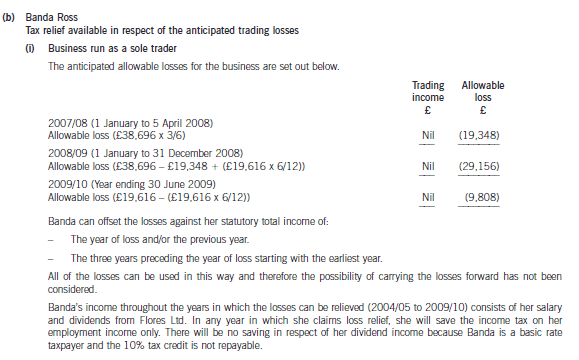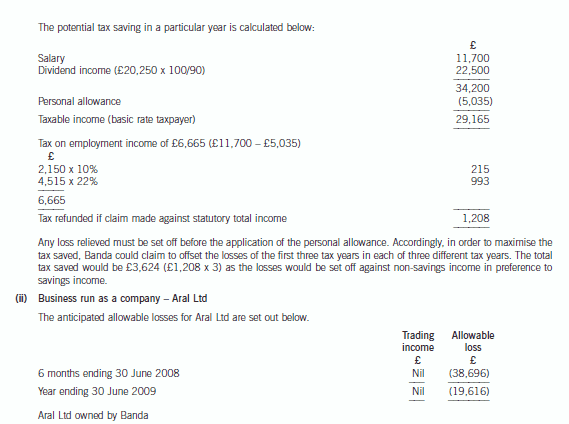疑问解答!ACCA与CPA这两大证书哪个更好,哪个更适合报考
发布时间:2020-04-03
ACCA和CPA两者都是国内比较流行的会计资格,认可度和含金量方面都很“优秀”,但在两者的报考条件、考试通过率、考试科目等方面却有着较为明显的区别。那么,总得来说两大证书哪个更好?哪个更适合报考呢?一起往下看看。
首先,从报考条件上看
ACCA与CPA证书两者的报考条件有着较大的差异,ACCA较为宽松而CPA则比较严格。因此很多无法满足CPA报考要求的人群较为适合报考ACCA。
报考条件:
具备以下条件之一即可报考ACCA:
1. 教育部认可的高等院校在校生(本科在校),顺利完成大一的课程考试,即可报名成为ACCA的正式学员;
2. 凡具有教育部承认的大专以上学历,即可报名成为ACCA的正式学员;
3. 不符合1、2项报名资格的申请者,可以申请参加FIA(Foundations in Accountancy)基础财务资格考试。在完成FAB(基础商业会计)、FMA(基础管理会计)、FFA(基础财务会计)3门课程后,可豁免ACCA AB-FA三门课程的考试,直接进入ACCA技能课程的考试。
符合下列条件的中国公民,可以申请参加注册会计师(CPA)全国统一考试专业阶段考试:
1、具有完全民事行为能力;
2、具有高等专科以上学校毕业学历,或者具有会计或者相关专业中级以上技术职称。
其次,从就业前景上看
CPA是国内唯一拥有审计签字权的证书,没有之一,因此,涉及到审计方面的工作时一般可以选择CPA。不过,这并不代表着ACCA在国内毫无用处。ACCA持证会员在国内比较容易受到外企或合资企业的雇主青睐,这是因为他们在国际会计视野方面表现优异。除此之外,两者的就业前景并无很大的差别,以下就是ACCA与CPA会员的主要就业方向
ACCA:
会计师事务所、企业、金融业,容易敲开外企大门,其国际性也尤其受到需要“走出去”的大型国企或民企青睐。
CPA:
会计师事务所、政府机构、企事业单位等,就业方向包括理财顾问、会计专家、财务总监、基金经理、内部审计师,内部控制经理、项目经理,法律顾问、合伙人等。
其三,从学习难度上看
CPA是国内注册会计师,其目的在于选拔符合要求的高端人才,因此,每年通过考试的人数并不会有较大差异,通过率也相差无几(近年来约为25%),但拿到证书就足矣证明自身的能力。不过,ACCA却与之不同。ACCA较为注重学员在财务管理/战略思维/会计视野上的提升,虽然题型较为灵活,但只要满分100考过50分(含)即可通过考试,因此,即便报考的人数越来越多,也不会严格控制考试的通过率。
两者的考试难度:
ACCA:
ACCA考试的难度是以英国大学学位考试的难度为标准,具体而言,第一(AB-FA)、第二部分(LW-FM)的难度分别相当于学士学位高年级课程的考试难度,第三部分战略阶段的考试相当于硕士学位最后阶段的考试。
CPA:
注会考试的难度主要来源于考试本身的难度,注册会计师考试科目的各科教材厚度都不容小觑,在机考模式下,教材上的所有考点都有可能出现,考生不仅要掌握知识点也要知道如何去运用,还要知道各类题型该用什么方式去解答。
看完以上内容,相信大家心中已经有了明确的答案,如果大家觉得意犹未尽,还想了解更多关于ACCA相关内容的话,敬请关注51题库考试学习网。
下面小编为大家准备了 ACCA考试 的相关考题,供大家学习参考。
(b) The tax relief available in respect of the anticipated trading losses, together with supporting calculations and
a recommended structure for the business. (16 marks)


Aral Ltd owned by Banda
The losses would have to be carried forward and deducted from the trading profits of the year ending 30 June 2010.
Aral Ltd cannot offset the loss in the current period or carry it back as it has no other income or gains.
Aral Ltd owned by Flores Ltd
The two companies will form. a group relief group if Flores Ltd owns at least 75% of the ordinary share capital of Aral
Ltd. The trading losses could be surrendered to Flores Ltd in the year ending 30 June 2008 and the year ending
30 June 2009. The total tax saved would be £11,079 ((£38,696 + £19,616) x 19%)
Recommended structure
The Aral business should be established in a company owned by Flores Ltd.
This will maximise the relief available in respect of the trading losses and enable relief to be obtained in the period in
which the losses are incurred.
Tutorial note
The whole of the loss for the period ending 30 June 2008 can be surrendered to Flores Ltd as it is less than that
company’s profit for the corresponding period, i.e. £60,000 (£120,000 x 6/12).
(ii) Advise Mr Fencer of the income tax implications of the proposed financing arrangements. (2 marks)
(ii) The income tax implications of the proposed financing arrangements
Mr Fencer has borrowed money from a UK bank in order to make a loan to Rapier Ltd, a close company. The interest
paid by Mr Fencer to the bank will be an allowable charge on income as long as he continues to hold more than 5% of
Rapier Ltd. Charges on income are deductible in arriving at an individual’s statutory total income.
Mr Fencer will receive interest from Rapier Ltd net of 20% income tax. The gross amount of interest will be subject to
income tax at either 10%, 20% or 40% depending on whether the income falls into Mr Fencer’s starting rate, basic rate
or higher rate tax band. Mr Fencer will obtain a tax credit for the 20% income tax suffered at source.
(c) Explain the term ‘target costing’ and how it may be applied by GWCC. Briefly discuss any potential
limitations in its application. (8 marks)
(c) Target costing should be viewed as an integral part of a strategic profit management system. The initial consideration in target
costing is the determination of an estimate of the selling price for a new product which will enable a firm to capture its required
share of the market. In this particular example, Superstores plc, which on the face of it looks a powerful commercial
organisation, wishes to apply a 35% mark-up on the purchase price of each cake from GWCC. Since Superstores plc has
already decided on a launch price of £20·25 then it follows that the maximum selling price that can be charged by GWCC
is (100/135) x £20·25 which is £15·00.
This is clearly a situation which lends itself to the application of target costing/pricing techniques as in essence GWCC can
see the extent to which they fall short of the required level of return with regard to a contract with Superstores plc which ends
after twelve months. Thus it is necessary to reduce the total costs by £556,029 to this figure in order to achieve the desired
level of profit, having regard to the rate of return required on new capital investment. The deduction of required profit from
the proposed selling price will produce a target price that must be met in order to ensure that the desired rate of return is
obtained. Thus the main theme that underpins target costing can be seen to be ‘what should a product cost in order to achieve
the desired level of return’.
Target costing will necessitate comparison of current estimated cost levels against the target level which must be achieved if
the desired levels of profitability, and hence return on investment, are to be achieved. Thus where a gap exists between the
current estimated cost levels and the target cost, it is essential that this gap be closed.
The Directors of GWCC plc should be aware of the fact that it is far easier to ‘design out’ cost during the pre-production phase
than to ‘control out’ cost during the production phase. Thus cost reduction at this stage of a product’s life cycle is of critical
significance to business success.
A number of techniques may be employed in order to help in the achievement and maintenance of the desired level of target
cost. Attention should be focussed upon the identification of value added and non-value added activities with the aim of the
elimination of the latter. The product should be developed in an atmosphere of ‘continuous improvement’. In this regard, total
quality techniques such as the use of Quality circles may be used in attempting to find ways of achieving reductions in product
cost.
Value engineering techniques can be used to evaluate necessary product features such as the quality of materials used. It is
essential that a collaborative approach is taken by the management of GWCC and that all interested parties such as suppliers
and customers are closely involved in order to engineer product enhancements at reduced cost.
The degree of success that will be achieved by GWCC via the application of target costing principles will be very much
dependent on the extent of ‘flexibility’ in variable costs. Also the accuracy of information gathered by GWCC will assume
critical importance because the use of inaccurate information will produce calculated ‘cost gaps’ which are meaningless and
render the application of target costing principles of little value.
声明:本文内容由互联网用户自发贡献自行上传,本网站不拥有所有权,未作人工编辑处理,也不承担相关法律责任。如果您发现有涉嫌版权的内容,欢迎发送邮件至:contact@51tk.com 进行举报,并提供相关证据,工作人员会在5个工作日内联系你,一经查实,本站将立刻删除涉嫌侵权内容。
- 2020-01-02
- 2020-01-09
- 2020-04-07
- 2020-01-10
- 2020-04-07
- 2020-01-27
- 2020-03-20
- 2020-04-19
- 2020-01-10
- 2020-01-10
- 2020-01-10
- 2020-05-18
- 2020-02-21
- 2020-01-09
- 2020-08-16
- 2020-01-09
- 2020-01-10
- 2020-01-10
- 2020-01-05
- 2020-04-21
- 2020-01-10
- 2020-08-16
- 2019-04-03
- 2020-02-21
- 2020-01-10
- 2020-03-07
- 2020-04-07
- 2019-12-28
- 2020-01-10
- 2020-01-10